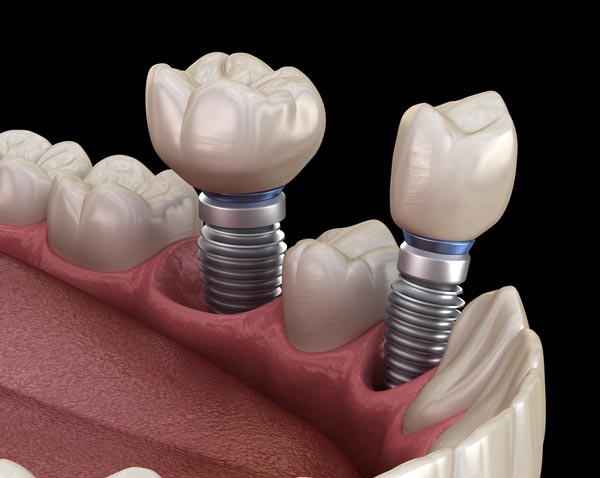How Long Does it Take to Get Dental Implants?

Dental implants are orthodontic devices that dentists use to replace missing teeth. The procedure requires titanium posts to be fused to the jaw with an artificial tooth screwed to the top of the posts, which hold the tooth firmly in place.
How long does the dental implant process take?
Before a patient undergoes dental implant surgery, it is important to understand that there is no set time for the process to be completed due to certain factors, which include:
- The health of the patient’s gums
- The patient’s overall health
- The number of teeth needing replacement
Because these three factors vary with each patient, it is impossible to give an accurate estimate of how long it will take to complete the procedure. The general rule of thumb is that the process takes several months to complete.
What are the steps involved in getting dental implants?
1. Consultation
The first step is the initial consultation, which usually takes 45 to 60 minutes. During the consultation, the dentist will discuss how the procedure works and answer any questions the patient has regarding the procedure.
2. Treatment plan
The dentist and patient go over the treatment plan, which is customized specifically for each patient, to discuss the number of teeth that have to be replaced and also examine the condition of the jaw and the remaining teeth to determine if the jaw and surrounding gum tissue are strong enough to hold the implant in place.
If the dentist determines that the bone in the jaw is not thick enough to hold the implant in place, they will recommend a bone graft to strengthen the jawbone so it can hold the implant in place. If the patient has to undergo a bone graft, there will be a four-month wait for the bone to heal before the patient can undergo dental implant surgery.
What happens during dental implant surgery?
The dentist will proceed with the surgery if there is no need for a bone graft or after the bone graft has healed. They will cut open the patient’s gum and expose the bone. Once the bone is exposed, the dentist will drill holes into the bone and place the titanium post.
After the titanium post has been placed, there will still be a gap in the tooth where the tooth is missing, which can be temporarily covered up with a partial denture. The denture can be removed for cleaning and during bedtime.
Once the jawbone and gums have healed and the titanium post is held firmly in place, the patient will undergo another surgical procedure to place the abutment, where the dental crown will be attached, on the titanium post.
If the abutment was attached to the titanium post before it was fused to the jaw, the patient will not have to undergo the second surgical procedure. After the abutment has been placed on the post, it will take up to two weeks before the gums heal and the artificial tooth is attached.
Conclusion
Dental implant surgery will improve the appearance and functionality of your teeth. However, the procedure requires a long-term commitment because it takes several months to complete. If you are interested in replacing your missing teeth with dental implants, schedule an appointment with your dentist to determine if you are an ideal candidate for the procedure.
Request an appointment here: https://www.mysaratogadentist.com or call My Saratoga Dentist PLLC at (518) 675-3094 for an appointment in our Saratoga Springs office.
Check out what others are saying about our services on Yelp: Read our Yelp reviews.
Recent Posts
Seeing your dentist for a dental restoration can be nerve-racking if you do not know what to expect. Some procedures are invasive, while others are not. Knowing more about the different processes can help you make informed decisions about your procedure. Here are five dental restoration FAQs you can ask your dentist.This dental restoration refers…
Getting the right dental restoration can improve your appearance and dental health. Your dentist will discuss the possible procedures that will fit your needs. Knowing more about these treatments can help you prepare for your next visit. Here are the common dental restoration procedures available.These restorations can be tooth-colored porcelain, gold, or composite material. This…
Receding gums are a condition in which the gum tissue pulls away from the teeth, exposing the roots, and it may harm the underlying health of your teeth and the appearance of your smile as a whole. Healthy gums are essential for supporting your teeth and lowering the risk of infection and tooth loss.Even though…
A full mouth reconstruction restores oral health, functionality, and aesthetics for patients with extensive dental issues. This process combines multiple restorative, cosmetic, and sometimes surgical procedures to address concerns such as missing teeth, decay, gum disease, or bite misalignment. No matter the issue, a full mouth reconstruction is tailored to the individual's unique needs, offering…


